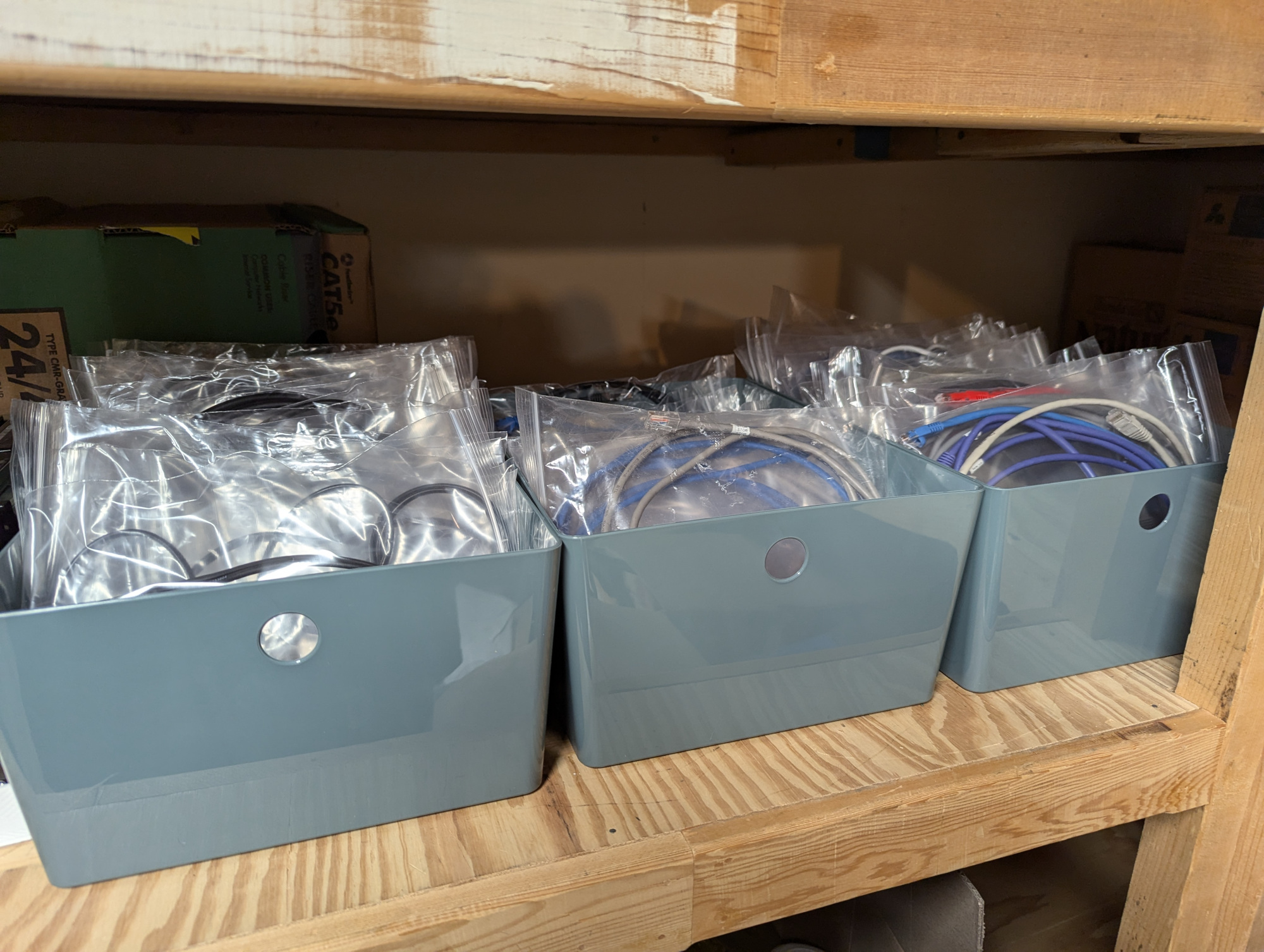If you’re like me you have a problem with keeping nearly every cable you come across. From patch cables that ship with new devices, to old phone chargers that still work and have a micro USB slot, to your stash of new USB-C cables, you’ve accumulated several boxes worth.
Once your collection passes a dozen or so cables, you’ll inevitably run into a few issues: namely that the cables will always be a tangled mess and finding what you need will be nearly impossible.
I found this solution on Pinterest some years ago and adapted it to my own needs, and for the last several years it’s been a wonderful and easy to use system. I’d love to give credit where credit is due, but I’ve lost that post to time.
Here’s my completed system:

The System
My system revolves around two components that interact: boxes and resealable plastic bags that fit in that box on end. For example, if you’re box is 6" wide by 10" tall, your bags should be around that size. The width is more important than the height, but if you’d like to put lids on the boxes make sure that they fit in that dimension too.
We then put each cable in a bag, then stack the bags on end in the box like a vertical file. The cords will generally keep the bags propped upright, and the bags keep things from tangling or otherwise mixing together.
When you need a cable, it acts like a file cabinet. You can thumb through the bags to find the one you want, and pull it out and use it. I organize my boxes by type, but feel free to do whatever makes the most sense for your application.
I’ve found some tips to be helpful as well:
- Write anything odd about the cable (like it’s wired for a specific application) so future you remembers.
- Don’t store cables that aren’t ready to use. For example, I make it a point to replace any broken RJ45 connectors before storing things so I don’t run into that later.
- It’s OK to store multiple small cables together. I have a number of smaller HDMI adapters, extensions, etc that I put in one bag. These might tangle, but if there’s only 5 short cables untangling is an easy task.
- Store cables and adapters that are often used together in one bag. My console cables and USB to Serial adapters are all together since I usually need both.
- Don’t mix USB-C, Micro USB, and other flavors. I mean you can, but I feel keeping them separate makes digging a lot easier.
- Don’t worry about making cables pretty in the bags. Some cables coil and sit in the bag as if it came from the factory, but others have a stiff jacket that has been molded into some spiderweb type shape. Sucking the air out of the bag and sealing it will make most cables pretty flat, at least flat enough for storage.
- The bags are re-usable!
My Praises
I’ve used this system for a number of years and it’s proven itself useful a ton of times. The biggest is that finding cables is easy as you can thumb through things like a file cabinet and nothing is ever tangled. Before, finding a cable was dumping the box on the ground and untangling cables to find they had one wrong end or were otherwise unusable.
Besides those, this is also quite space efficient. The three boxes I have expand to a medium sized pile when dumped out, and several medium sized piles if left outside the bags. When cleaning up things after a recent move, I was surprised after seeing how large of a moving box of loose cables this replaced.
This has also let me make much more efficient use of my cables as well. I’m not buying replacements for things I have, and I’m making use of extra gear that otherwise would be thrown out or wasting space. One things I’ve learned is if you have a collection of anything (movies, games, wires, nuts and bolts), it’s useless unless you have it organized in some logical way that lets you make use of it.